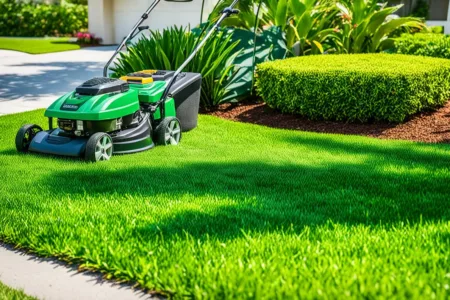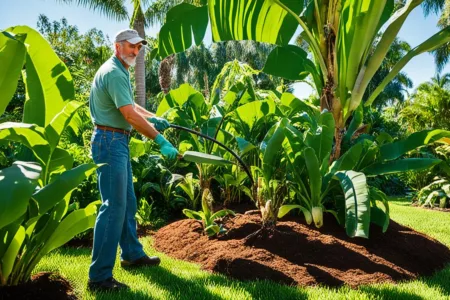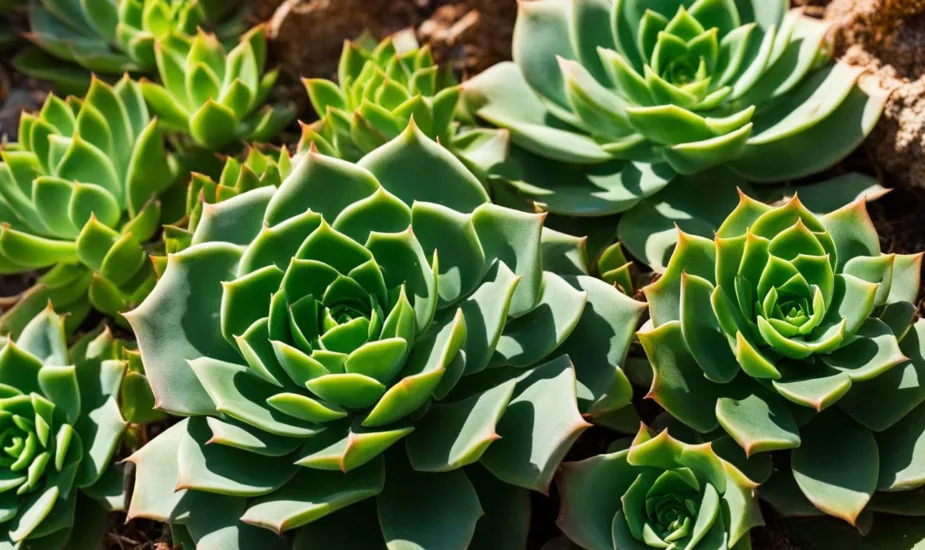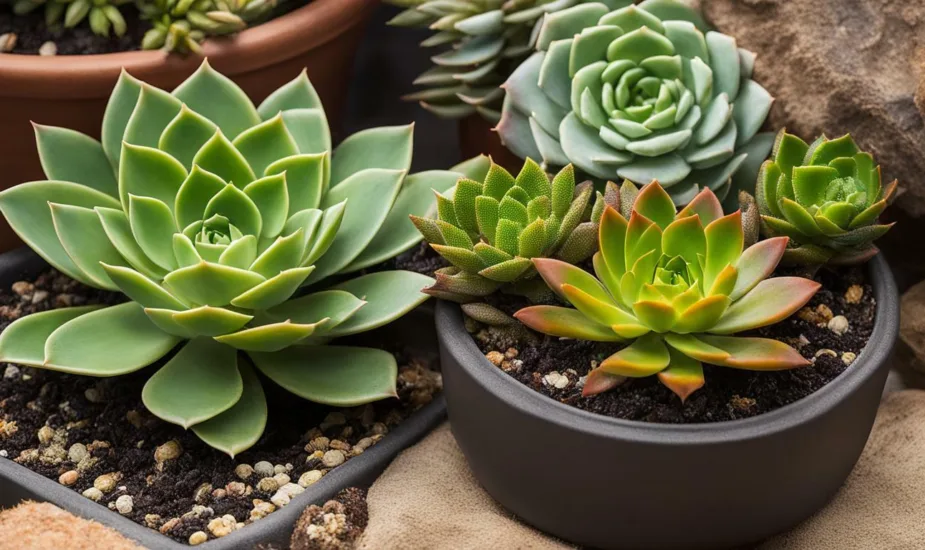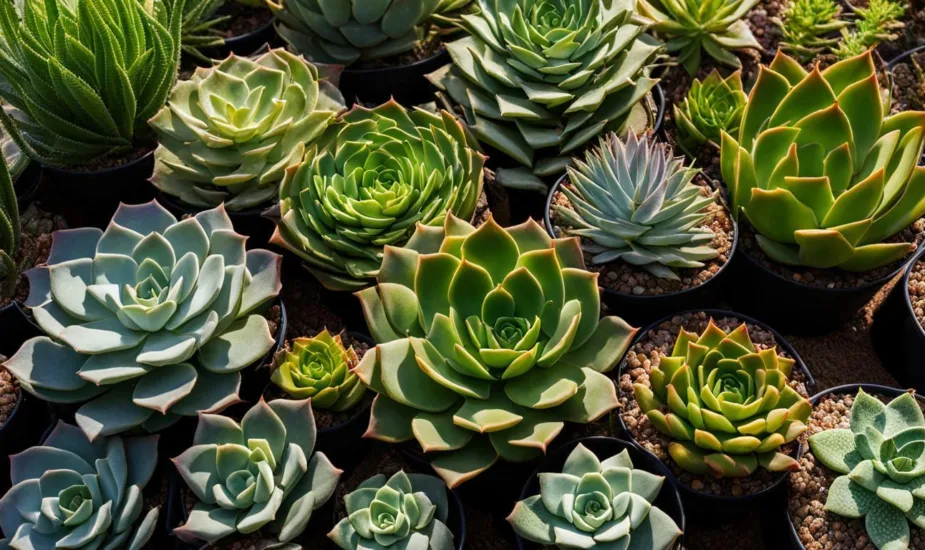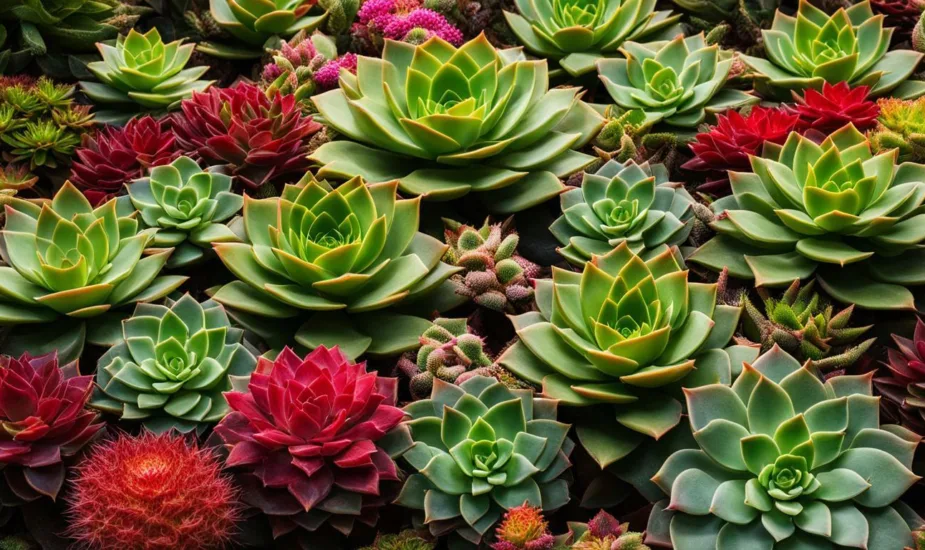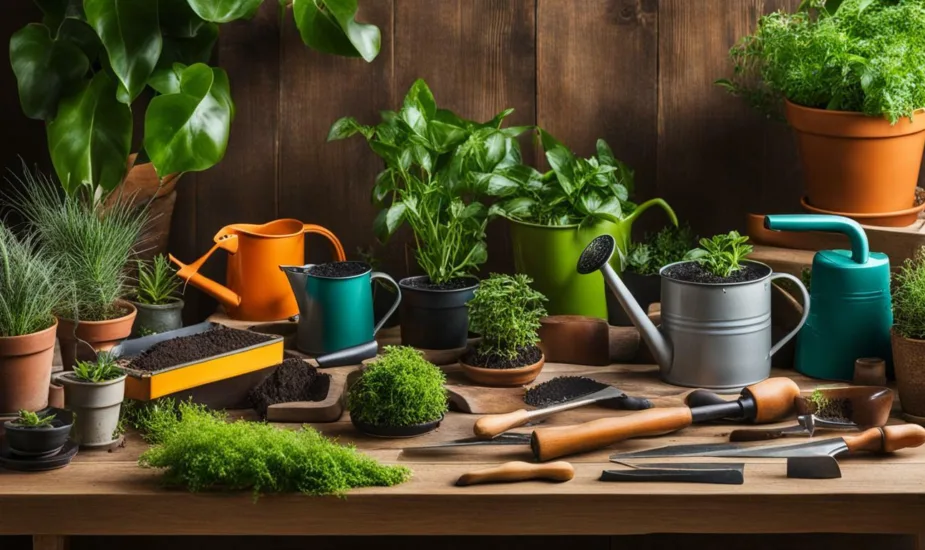Scandinavian Gardening: A Beginner’s Guide to Embracing Hygge in Your Outdoor Space
I adore Scandinavian gardening. In our fast-paced world, this is a quick and easy way to transform your garden into an oasis of calm.

Imagine walking out onto your small apartment balcony, a warm cup of coffee in hand, to find a mini oasis of lush greenery and vibrant fruits. This is the beauty of container fruit gardening, a perfect solution for urban dwellers like me who crave the taste of homegrown fruit but have limited outdoor space.
When I first embarked on my journey into container fruit gardening, I had no idea where to begin. I was a complete novice, with little gardening experience and a desire to bring a touch of nature into my urban environment. That’s when I stumbled upon the world of potted fruit trees, the perfect option for those who want to enjoy fresh fruit without the need for a sprawling garden.
Through trial and error, as well as hours of research, I discovered the secrets to successful container fruit gardening. Now, I want to share my fresh picks guide with you, my fellow urban dwellers and beginner gardeners. In this guide, I’ll walk you through everything you need to know to start your own container fruit garden, from selecting the right varieties to essential gardening techniques and maintenance tips.
Get ready to transform your small space into a thriving oasis of fresh, homegrown fruit. Your taste buds will thank you!
Key Takeaways:
- Container fruit gardening is a great option for urban dwellers and beginners with limited outdoor space.
- Potted fruit trees provide delicious fruit and add beauty to any space.
- Choosing the right fruit tree varieties is crucial for container gardening success.
- Essential urban gardening techniques like soil mix selection and proper drainage are important for fruit tree health.
- Maintenance tips like watering, pruning, and overwintering are essential for container fruit gardening.
The Appeal of Container Fruit Gardening
Container fruit gardening is a popular choice for both experienced gardeners and beginners alike, offering numerous advantages. Potted fruit trees not only provide delicious fruit but also add beauty and greenery to any space. Whether you have limited outdoor areas such as balconies or patios or simply want to optimize your gardening space, container fruit gardening is the perfect solution. By utilizing pots, you can enjoy the benefits of space-saving gardening while still reaping the rewards of a bountiful fruit harvest.
Why Choose Potted Fruit Trees?
Potted fruit trees are a versatile option for any garden, providing an array of benefits. Here are a few reasons why you might consider choosing potted fruit trees for your container fruit garden:
- Flexibility: Potted fruit trees can be moved around, allowing you to optimize sunlight and shade for optimal growth and fruit production.
- Aesthetics: The beauty and greenery of fruit trees add visual appeal to any space, adding a touch of nature to balconies, patios, or even indoor environments.
- Convenience: With potted fruit trees, you have easy access to your favorite fruits right outside your doorstep, eliminating the need for travel to a local grocery store.
Benefits of Space-Saving Gardening
One of the key advantages of container fruit gardening is the ability to save space. With the challenges of limited outdoor areas in urban environments, container gardening allows you to make the most of your available space. By utilizing pots, you can enjoy the benefits of gardening in a compact and efficient manner. Whether you have a small balcony, rooftop, or even a windowsill, container fruit gardening makes it possible to grow your own fresh and delicious fruits without requiring a large plot of land.
Optimizing Sunlight and Shade for Container Trees
Optimizing sunlight and shade is essential for the health and growth of container fruit trees. By strategically moving your potted trees, you can ensure they receive the ideal amount of sunlight each day. Observing your trees and understanding their sunlight requirements is crucial for their overall well-being. If your trees are not getting enough sunlight, they may not bear fruit, while excess sunlight can cause stress or sunburn. With container gardening, you have the flexibility to adjust the positioning of your fruit trees to optimize their exposure to sunlight and shade.
Whether you have limited outdoor space or simply want to make the most of your gardening area, container fruit gardening offers numerous benefits. With potted fruit trees, you can enjoy not just the fruits but also the beauty they bring to your surroundings. By optimizing sunlight and shade, you can ensure that your container trees thrive and produce an abundant harvest. Let’s explore how to select the right fruit tree varieties for your container garden in the next section.
Selecting the Right Varieties for Your Container Fruit Garden

A close-up of a hand selecting ripe fruit from a selection of containers. The hand is carefully examining each piece of fruit, feeling for its ripeness and texture. The containers are small and varied in shape and size, with some made of terracotta and others of plastic. Sunlight streams in from the side, casting a warm glow on the scene. In the background, blurred out, are rows of other fruit trees waiting to be selected for the container garden.
When it comes to container fruit gardening, selecting the right fruit tree varieties is essential for success. With limited space in a container, it’s important to choose trees that are suitable for small space gardening. Dwarf and miniature varieties are ideal as they have smaller root systems and mature heights, making them a perfect fit for confined spaces.
Not all fruit tree varieties thrive in containers, so it’s crucial to consider the specific climate and growing conditions of your area. Certain varieties are better suited for container gardening, as they are more adaptable to the limited space and environmental conditions.
Here are some key factors to consider when selecting fruit tree varieties for your container fruit garden:
- Size: Look for apple, peach, or cherry trees that are labeled as dwarf or miniature. These varieties have been bred to stay compact and are well-suited for container growth.
- Pollination: Some fruit trees require cross-pollination with another variety to produce fruit. If you have limited space, consider self-pollinating varieties or select two different varieties that can pollinate each other in a small area.
- Climate: Pay attention to the cold hardiness and heat tolerance of fruit tree varieties. Choose varieties that can withstand the specific climate conditions in your area to increase their chances of success in containers.
- Fruit Quality: Consider the taste, size, and ripening time of the fruit produced by different varieties. Choose varieties that are known for their excellent flavor and are suitable for your preferences and culinary needs.
Taking the time to research and select the right varieties for your container fruit garden will set the stage for a bountiful harvest and a thriving garden. Now let’s move on to the next section to learn essential urban gardening techniques for your container fruit trees.
Essential Urban Gardening Techniques for Thriving Fruit Trees

Show a container overflowing with fresh fruit, nestled between tall buildings. A hand reaches in to pluck a ripe piece of fruit, while various urban gardening tools (such as handheld pruning shears and watering canisters) sit nearby. The container is surrounded by smaller potted plants, showcasing how even in a small space, one can create a thriving fruit garden. The overall tone of the image should be bright and optimistic, capturing the joy of growing fresh produce in an urban setting.
In order to ensure the health and abundance of your container fruit trees, it is important to employ essential urban gardening techniques. Proper soil mix, adequate drainage, and fertilization are key factors that contribute to the success of your fruit tree cultivation.
Choosing the Ideal Soil Mix
One of the first steps in container fruit gardening is selecting the ideal soil mix for your fruit trees. A well-balanced and nutrient-rich soil mixture will provide the necessary support and nourishment for your trees to thrive. The ideal soil mix for container fruit trees should:
- Have good water retention capabilities to prevent excessive drying out
- Offer proper drainage to prevent waterlogging and root rot
- Contain a mixture of organic matter, such as compost or well-rotted manure, to provide essential nutrients
- Be well-aerated to promote healthy root development
It is recommended to use a high-quality potting mix specifically formulated for fruit trees in containers. This will ensure that your trees receive the necessary nutrients and have optimal growing conditions.
The Importance of Proper Drainage
Proper drainage is crucial for container fruit trees to prevent waterlogging and root rot. Without adequate drainage, excess water can cause the roots to suffocate and result in tree decline or even death. To ensure proper drainage:
- Choose pots with drainage holes at the bottom
- Use a layer of stones or broken pottery at the bottom of the pot to facilitate water drainage
- Avoid overwatering and allow the top few inches of soil to dry out between watering sessions
By maintaining proper drainage, you can help your fruit trees avoid water-related issues and promote healthy root growth.
Fertilizing Container Fruit Trees
Fertilizing your container fruit trees is essential to replenish nutrients and support healthy growth. Containerized trees have limited access to natural soil nutrients, so it’s important to provide them with regular fertilization. Here are some tips for fertilizing your container fruit trees:
- Use a slow-release organic fertilizer formulated for fruit trees
- Follow the manufacturer’s instructions for application rates and frequency
- Apply the fertilizer evenly around the tree’s dripline
- Water the tree thoroughly after fertilization to help distribute the nutrients
Regular fertilization will help ensure that your fruit trees receive the necessary nutrients to produce abundant and flavorful harvests.
| Urban Gardening Techniques for Thriving Fruit Trees | Ideal Soil Mix | Proper Drainage | Fertilizing Container Fruit Trees |
|---|---|---|---|
| Benefits | – Provides necessary support and nutrients – Ensures healthy root development – Promotes optimal growing conditions | – Prevents water logging and root rot – Facilitates healthy root growth | – Replenishes nutrients – Supports healthy growth – Promotes abundant harvests |
| Importance | – Enables nutrient uptake – Enhances overall plant health | – Prevents water-related issues – Maintains root health | – Provides essential nutrients – Supports fruit production |
| Guidelines | – Use well-balanced soil mix – Include organic matter for nutrients – Ensure good water retention and drainage | – Choose pots with drainage holes – Use bottom layer for drainage support – Avoid overwatering | – Use slow-release organic fertilizer – Follow application instructions – Water thoroughly after fertilizing |
Container Fruit Gardening Maintenance Tips
Imagine walking out onto your small apartment balcony, a warm cup of coffee in hand, to find a mini oasis of lush greenery and vibrant fruits. This is the beauty of container fruit gardening, a perfect solution for urban dwellers like me who crave the taste of homegrown fruit but have limited outdoor space.
When I first embarked on my journey into container fruit gardening, I had no idea where to begin. I was a complete novice, with little gardening experience and a desire to bring a touch of nature into my urban environment. That’s when I stumbled upon the world of potted fruit trees, the perfect option for those who want to enjoy fresh fruit without the need for a sprawling garden.
Through trial and error, as well as hours of research, I discovered the secrets to successful container fruit gardening. Now, I want to share my fresh picks guide with you, my fellow urban dwellers and beginner gardeners. In this guide, I’ll walk you through everything you need to know to start your own container fruit garden, from selecting the right varieties to essential gardening techniques and maintenance tips.
Get ready to transform your small space into a thriving oasis of fresh, homegrown fruit. Your taste buds will thank you!
Key Takeaways:
- Container fruit gardening is a great option for urban dwellers and beginners with limited outdoor space.
- Potted fruit trees provide delicious fruit and add beauty to any space.
- Choosing the right fruit tree varieties is crucial for container gardening success.
- Essential urban gardening techniques like soil mix selection and proper drainage are important for fruit tree health.
- Maintenance tips like watering, pruning, and overwintering are essential for container fruit gardening.
The Appeal of Container Fruit Gardening
Container fruit gardening is a popular choice for both experienced gardeners and beginners alike, offering numerous advantages. Potted fruit trees not only provide delicious fruit but also add beauty and greenery to any space. Whether you have limited outdoor areas such as balconies or patios or simply want to optimize your gardening space, container fruit gardening is the perfect solution. By utilizing pots, you can enjoy the benefits of space-saving gardening while still reaping the rewards of a bountiful fruit harvest.
Why Choose Potted Fruit Trees?
Potted fruit trees are a versatile option for any garden, providing an array of benefits. Here are a few reasons why you might consider choosing potted fruit trees for your container fruit garden:
- Flexibility: Potted fruit trees can be moved around, allowing you to optimize sunlight and shade for optimal growth and fruit production.
- Aesthetics: The beauty and greenery of fruit trees add visual appeal to any space, adding a touch of nature to balconies, patios, or even indoor environments.
- Convenience: With potted fruit trees, you have easy access to your favorite fruits right outside your doorstep, eliminating the need for travel to a local grocery store.
Benefits of Space-Saving Gardening
One of the key advantages of container fruit gardening is the ability to save space. With the challenges of limited outdoor areas in urban environments, container gardening allows you to make the most of your available space. By utilizing pots, you can enjoy the benefits of gardening in a compact and efficient manner. Whether you have a small balcony, rooftop, or even a windowsill, container fruit gardening makes it possible to grow your own fresh and delicious fruits without requiring a large plot of land.
Optimizing Sunlight and Shade for Container Trees
Optimizing sunlight and shade is essential for the health and growth of container fruit trees. By strategically moving your potted trees, you can ensure they receive the ideal amount of sunlight each day. Observing your trees and understanding their sunlight requirements is crucial for their overall well-being. If your trees are not getting enough sunlight, they may not bear fruit, while excess sunlight can cause stress or sunburn. With container gardening, you have the flexibility to adjust the positioning of your fruit trees to optimize their exposure to sunlight and shade.
Whether you have limited outdoor space or simply want to make the most of your gardening area, container fruit gardening offers numerous benefits. With potted fruit trees, you can enjoy not just the fruits but also the beauty they bring to your surroundings. By optimizing sunlight and shade, you can ensure that your container trees thrive and produce an abundant harvest. Let’s explore how to select the right fruit tree varieties for your container garden in the next section.
Selecting the Right Varieties for Your Container Fruit Garden

A close-up of a hand selecting ripe fruit from a selection of containers. The hand is carefully examining each piece of fruit, feeling for its ripeness and texture. The containers are small and varied in shape and size, with some made of terracotta and others of plastic. Sunlight streams in from the side, casting a warm glow on the scene. In the background, blurred out, are rows of other fruit trees waiting to be selected for the container garden.
When it comes to container fruit gardening, selecting the right fruit tree varieties is essential for success. With limited space in a container, it’s important to choose trees that are suitable for small space gardening. Dwarf and miniature varieties are ideal as they have smaller root systems and mature heights, making them a perfect fit for confined spaces.
Not all fruit tree varieties thrive in containers, so it’s crucial to consider the specific climate and growing conditions of your area. Certain varieties are better suited for container gardening, as they are more adaptable to the limited space and environmental conditions.
Here are some key factors to consider when selecting fruit tree varieties for your container fruit garden:
- Size: Look for apple, peach, or cherry trees that are labeled as dwarf or miniature. These varieties have been bred to stay compact and are well-suited for container growth.
- Pollination: Some fruit trees require cross-pollination with another variety to produce fruit. If you have limited space, consider self-pollinating varieties or select two different varieties that can pollinate each other in a small area.
- Climate: Pay attention to the cold hardiness and heat tolerance of fruit tree varieties. Choose varieties that can withstand the specific climate conditions in your area to increase their chances of success in containers.
- Fruit Quality: Consider the taste, size, and ripening time of the fruit produced by different varieties. Choose varieties that are known for their excellent flavor and are suitable for your preferences and culinary needs.
Taking the time to research and select the right varieties for your container fruit garden will set the stage for a bountiful harvest and a thriving garden. Now let’s move on to the next section to learn essential urban gardening techniques for your container fruit trees.
Essential Urban Gardening Techniques for Thriving Fruit Trees

Show a container overflowing with fresh fruit, nestled between tall buildings. A hand reaches in to pluck a ripe piece of fruit, while various urban gardening tools (such as handheld pruning shears and watering canisters) sit nearby. The container is surrounded by smaller potted plants, showcasing how even in a small space, one can create a thriving fruit garden. The overall tone of the image should be bright and optimistic, capturing the joy of growing fresh produce in an urban setting.
In order to ensure the health and abundance of your container fruit trees, it is important to employ essential urban gardening techniques. Proper soil mix, adequate drainage, and fertilization are key factors that contribute to the success of your fruit tree cultivation.
Choosing the Ideal Soil Mix
One of the first steps in container fruit gardening is selecting the ideal soil mix for your fruit trees. A well-balanced and nutrient-rich soil mixture will provide the necessary support and nourishment for your trees to thrive. The ideal soil mix for container fruit trees should:
- Have good water retention capabilities to prevent excessive drying out
- Offer proper drainage to prevent waterlogging and root rot
- Contain a mixture of organic matter, such as compost or well-rotted manure, to provide essential nutrients
- Be well-aerated to promote healthy root development
It is recommended to use a high-quality potting mix specifically formulated for fruit trees in containers. This will ensure that your trees receive the necessary nutrients and have optimal growing conditions.
The Importance of Proper Drainage
Proper drainage is crucial for container fruit trees to prevent waterlogging and root rot. Without adequate drainage, excess water can cause the roots to suffocate and result in tree decline or even death. To ensure proper drainage:
- Choose pots with drainage holes at the bottom
- Use a layer of stones or broken pottery at the bottom of the pot to facilitate water drainage
- Avoid overwatering and allow the top few inches of soil to dry out between watering sessions
By maintaining proper drainage, you can help your fruit trees avoid water-related issues and promote healthy root growth.
Fertilizing Container Fruit Trees
Fertilizing your container fruit trees is essential to replenish nutrients and support healthy growth. Containerized trees have limited access to natural soil nutrients, so it’s important to provide them with regular fertilization. Here are some tips for fertilizing your container fruit trees:
- Use a slow-release organic fertilizer formulated for fruit trees
- Follow the manufacturer’s instructions for application rates and frequency
- Apply the fertilizer evenly around the tree’s dripline
- Water the tree thoroughly after fertilization to help distribute the nutrients
Regular fertilization will help ensure that your fruit trees receive the necessary nutrients to produce abundant and flavorful harvests.
| Urban Gardening Techniques for Thriving Fruit Trees | Ideal Soil Mix | Proper Drainage | Fertilizing Container Fruit Trees |
|---|---|---|---|
| Benefits | – Provides necessary support and nutrients – Ensures healthy root development – Promotes optimal growing conditions | – Prevents water logging and root rot – Facilitates healthy root growth | – Replenishes nutrients – Supports healthy growth – Promotes abundant harvests |
| Importance | – Enables nutrient uptake – Enhances overall plant health | – Prevents water-related issues – Maintains root health | – Provides essential nutrients – Supports fruit production |
| Guidelines | – Use well-balanced soil mix – Include organic matter for nutrients – Ensure good water retention and drainage | – Choose pots with drainage holes – Use bottom layer for drainage support – Avoid overwatering | – Use slow-release organic fertilizer – Follow application instructions – Water thoroughly after fertilizing |
Container Fruit Gardening Maintenance Tips

A hand holding pruning shears trimming a vine overflowing from a container, with ripe fruit visible in the background.
Maintenance is an important aspect of container fruit gardening to ensure the continued health and productivity of your fruit trees. Proper care and attention will help your trees thrive and provide you with abundant and delicious fruit. Here are some essential maintenance tips to keep in mind:
Watering Your Potted Fruit Trees
Watering your potted fruit trees correctly is essential for their health and growth. It’s important to find the right balance and avoid both under and overwatering. Regularly check the moisture level of the soil by inserting your finger about an inch deep. If the soil feels dry, it’s time to water. Ensure that water reaches all parts of the container and allow excess water to drain. Be mindful of providing adequate water during hot, dry weather and adjust your watering schedule accordingly. Remember, consistent and proper watering is key to maintaining healthy and productive fruit trees.
Pruning for Health and Abundance
Pruning plays a vital role in maintaining the health and abundance of your container fruit trees. Regular pruning helps remove dead, damaged, or diseased branches, ensuring that the tree can allocate its resources to healthy growth and fruit production. It also helps shape the tree, promoting better air circulation and sunlight penetration, both of which are essential for fruit development. Prune during the dormant season, when the tree is not actively growing, while avoiding periods of extreme cold. Use clean and sharp pruning tools to make clean cuts, and always follow proper pruning techniques to avoid damaging the tree.
Seasonal Care and Overwintering Strategies
Seasonal care and overwintering strategies are crucial for protecting and caring for your container fruit trees during the colder months. Before the onset of winter, prepare your trees by removing any fallen leaves or debris from the container. Insulate the pots with mulch or wrap them in burlap to help protect the roots from freezing temperatures. Consider moving your container trees to a sheltered area, such as a garage or shed, or utilize frost protection methods like covers or blankets to shield them from harsh weather conditions. It’s also important to monitor the soil moisture during winter, making sure it doesn’t dry out completely. With proper seasonal care and overwintering strategies, your fruit trees will be ready to thrive when the warmer months return.
| Container Gardening Maintenance | Watering Fruit Trees | Pruning for Health | Seasonal Care |
|---|---|---|---|
| Regular watering ensures proper hydration and growth. | Find the right balance and avoid under or overwatering. | Remove dead, damaged, or diseased branches for overall tree health. | Prepare trees for winter and protect them from freezing temperatures. |
| Monitor soil moisture and adjust watering schedule based on weather conditions. | Check soil moisture regularly and adjust watering as needed. | Prune during the dormant season following proper pruning techniques. | Utilize frost protection methods and monitor soil moisture during winter. |
Conclusion
Container fruit gardening is an incredibly rewarding and accessible way to enjoy the sweetness of homegrown fruit, no matter the limitations of your outdoor space. By following the tips and techniques outlined in this fresh picks guide, you can create a thriving container fruit garden and experience the joys of urban gardening.
With careful selection of fruit tree varieties that are suitable for container growth, you can maximize the potential of your small space. From dwarf and miniature varieties to those that thrive within specific climates, there’s a perfect fruit tree for every container gardener.
Proper maintenance is key to the success of your container fruit garden. By ensuring your trees receive the ideal soil mix, proper drainage, and regular fertilization, you can provide them with the essential nutrients they need to flourish. Additionally, watering correctly, pruning for health and abundance, and implementing seasonal care strategies will keep your fruit trees thriving year round.
So, why wait? Start your container fruit gardening journey today and savor the fruits of your labor. With a little bit of patience, you’ll soon be able to enjoy the delicious taste of homegrown fruit, right at your fingertips. Happy gardening!
FAQ
Why should I choose container fruit gardening?
Container fruit gardening is a great option for those with limited outdoor space or beginners. It allows you to grow delicious fruit in pots, adding beauty and greenery to any space. It is also a space-saving solution for small areas like balconies and patios.
What are the benefits of space-saving gardening?
Space-saving gardening, such as container fruit gardening, allows you to maximize the use of limited space. It is perfect for urban dwellers or those with small yards. You can enjoy the sweetness of homegrown fruit without needing a large garden.
How can I optimize sunlight and shade for my container fruit trees?
One of the advantages of container gardening is flexibility in moving pots to optimize sunlight and shade. You can position your fruit trees where they receive the optimal conditions for growth and fruit production. Keep in mind that fruit trees generally require 6-8 hours of sunlight per day.
How do I select the right fruit tree varieties for container gardening?
When selecting fruit tree varieties for container gardening, choose dwarf or miniature varieties that are suitable for confined spaces. Consider the specific climate and growing conditions of your area to ensure you choose varieties that are well-suited for container gardening.
What is the ideal soil mix for container fruit trees?
The ideal soil mix for container fruit trees should provide the right nutrients and good drainage. You can use a combination of potting soil, organic matter (like compost), and perlite or vermiculite to improve drainage.
Why is proper drainage important for container fruit trees?
Proper drainage is important to prevent root rot and ensure the health of your container fruit trees. Make sure your pots have drainage holes and use well-draining soil mix to allow excess water to flow out of the container.
How do I fertilize my container fruit trees?
Fertilizing your container fruit trees is essential to replenish nutrients and promote healthy growth. Use a balanced fertilizer formulated for fruit trees, following the instructions on the package to determine the proper amount and frequency of application.
How should I water my potted fruit trees?
Proper watering is crucial to prevent under or overwatering your potted fruit trees. Water the trees deeply and thoroughly, allowing excess water to drain out of the pot. Monitor the moisture levels and adjust watering frequency based on the specific needs of your fruit trees.
Why is pruning important for container fruit trees?
Pruning helps promote the health and abundance of your container fruit trees. It allows you to remove dead or damaged branches and shape the trees for better fruit production. Prune your fruit trees during the dormant season to stimulate new growth.
How should I care for my container fruit trees during the colder months?
Seasonal care and overwintering strategies are important for protecting and caring for your container fruit trees during the colder months. This may include bringing the pots indoors, providing insulation, or using protective coverings to shield the trees from freezing temperatures.
A hand holding pruning shears trimming a vine overflowing from a container, with ripe fruit visible in the background.
Maintenance is an important aspect of container fruit gardening to ensure the continued health and productivity of your fruit trees. Proper care and attention will help your trees thrive and provide you with abundant and delicious fruit. Here are some essential maintenance tips to keep in mind:
Watering Your Potted Fruit Trees
Watering your potted fruit trees correctly is essential for their health and growth. It’s important to find the right balance and avoid both under and overwatering. Regularly check the moisture level of the soil by inserting your finger about an inch deep. If the soil feels dry, it’s time to water. Ensure that water reaches all parts of the container and allow excess water to drain. Be mindful of providing adequate water during hot, dry weather and adjust your watering schedule accordingly. Remember, consistent and proper watering is key to maintaining healthy and productive fruit trees.
Pruning for Health and Abundance
Pruning plays a vital role in maintaining the health and abundance of your container fruit trees. Regular pruning helps remove dead, damaged, or diseased branches, ensuring that the tree can allocate its resources to healthy growth and fruit production. It also helps shape the tree, promoting better air circulation and sunlight penetration, both of which are essential for fruit development. Prune during the dormant season, when the tree is not actively growing, while avoiding periods of extreme cold. Use clean and sharp pruning tools to make clean cuts, and always follow proper pruning techniques to avoid damaging the tree.
Seasonal Care and Overwintering Strategies
Seasonal care and overwintering strategies are crucial for protecting and caring for your container fruit trees during the colder months. Before the onset of winter, prepare your trees by removing any fallen leaves or debris from the container. Insulate the pots with mulch or wrap them in burlap to help protect the roots from freezing temperatures. Consider moving your container trees to a sheltered area, such as a garage or shed, or utilize frost protection methods like covers or blankets to shield them from harsh weather conditions. It’s also important to monitor the soil moisture during winter, making sure it doesn’t dry out completely. With proper seasonal care and overwintering strategies, your fruit trees will be ready to thrive when the warmer months return.
| Container Gardening Maintenance | Watering Fruit Trees | Pruning for Health | Seasonal Care |
|---|---|---|---|
| Regular watering ensures proper hydration and growth. | Find the right balance and avoid under or overwatering. | Remove dead, damaged, or diseased branches for overall tree health. | Prepare trees for winter and protect them from freezing temperatures. |
| Monitor soil moisture and adjust watering schedule based on weather conditions. | Check soil moisture regularly and adjust watering as needed. | Prune during the dormant season following proper pruning techniques. | Utilize frost protection methods and monitor soil moisture during winter. |
Conclusion
Container fruit gardening is an incredibly rewarding and accessible way to enjoy the sweetness of homegrown fruit, no matter the limitations of your outdoor space. By following the tips and techniques outlined in this fresh picks guide, you can create a thriving container fruit garden and experience the joys of urban gardening.
With careful selection of fruit tree varieties that are suitable for container growth, you can maximize the potential of your small space. From dwarf and miniature varieties to those that thrive within specific climates, there’s a perfect fruit tree for every container gardener.
Proper maintenance is key to the success of your container fruit garden. By ensuring your trees receive the ideal soil mix, proper drainage, and regular fertilization, you can provide them with the essential nutrients they need to flourish. Additionally, watering correctly, pruning for health and abundance, and implementing seasonal care strategies will keep your fruit trees thriving year round.
So, why wait? Start your container fruit gardening journey today and savor the fruits of your labor. With a little bit of patience, you’ll soon be able to enjoy the delicious taste of homegrown fruit, right at your fingertips. Happy gardening!
FAQ
Why should I choose container fruit gardening?
Container fruit gardening is a great option for those with limited outdoor space or beginners. It allows you to grow delicious fruit in pots, adding beauty and greenery to any space. It is also a space-saving solution for small areas like balconies and patios.
What are the benefits of space-saving gardening?
Space-saving gardening, such as container fruit gardening, allows you to maximize the use of limited space. It is perfect for urban dwellers or those with small yards. You can enjoy the sweetness of homegrown fruit without needing a large garden.
How can I optimize sunlight and shade for my container fruit trees?
One of the advantages of container gardening is flexibility in moving pots to optimize sunlight and shade. You can position your fruit trees where they receive the optimal conditions for growth and fruit production. Keep in mind that fruit trees generally require 6-8 hours of sunlight per day.
How do I select the right fruit tree varieties for container gardening?
When selecting fruit tree varieties for container gardening, choose dwarf or miniature varieties that are suitable for confined spaces. Consider the specific climate and growing conditions of your area to ensure you choose varieties that are well-suited for container gardening.
What is the ideal soil mix for container fruit trees?
The ideal soil mix for container fruit trees should provide the right nutrients and good drainage. You can use a combination of potting soil, organic matter (like compost), and perlite or vermiculite to improve drainage.
Why is proper drainage important for container fruit trees?
Proper drainage is important to prevent root rot and ensure the health of your container fruit trees. Make sure your pots have drainage holes and use well-draining soil mix to allow excess water to flow out of the container.
How do I fertilize my container fruit trees?
Fertilizing your container fruit trees is essential to replenish nutrients and promote healthy growth. Use a balanced fertilizer formulated for fruit trees, following the instructions on the package to determine the proper amount and frequency of application.
How should I water my potted fruit trees?
Proper watering is crucial to prevent under or overwatering your potted fruit trees. Water the trees deeply and thoroughly, allowing excess water to drain out of the pot. Monitor the moisture levels and adjust watering frequency based on the specific needs of your fruit trees.
Why is pruning important for container fruit trees?
Pruning helps promote the health and abundance of your container fruit trees. It allows you to remove dead or damaged branches and shape the trees for better fruit production. Prune your fruit trees during the dormant season to stimulate new growth.
How should I care for my container fruit trees during the colder months?
Seasonal care and overwintering strategies are important for protecting and caring for your container fruit trees during the colder months. This may include bringing the pots indoors, providing insulation, or using protective coverings to shield the trees from freezing temperatures.
As I sit here on this crisp September morning sipping my coffee and looking out over my Hygge-inspired Scandinavian garden, I can’t help but feel a sense of calm wash over me. The contrast of the deep emerald greens against the weathered grey stone pathways instantly transports me to the forests and countryside of Sweden, Norway, and Denmark.
Sounds good? Let’s dive into it. While the principles of Hygge (that feeling of coziness and contentment) are often applied to interior design, bringing these elements into your outdoor space can be just as rewarding. If you’re looking to create a Scandinavian-style garden that evokes feelings of comfort and joy, this beginner’s guide will help you get started.
Focus on Natural Materials is a Key to Scandinavian Gardening

The Scandinavian design aesthetic tends to favor natural, organic textures and materials. Incorporating elements like wood, stone, wicker, cotton, wool and linen can help create that rustic charm. Some specific ways to work these materials into your garden include:
- Gravel or stone pathways
- Wooden raised garden beds
- Wicker or rattan patio furniture
- Linen cushions and pillows
- Ceramic, concrete or stone planters
- Wood pergolas, trellises and arbors
- Wool rugs and throws
During my last trip to Copenhagen, I was amazed by all of the cobblestone streets and rugged stone architecture. I knew I had to bring a touch of that earthy texture into my own green space. That’s when my husband and I decided to rip up our old concrete sidewalk and replace it with gravel pathways winding through the garden.
Incorporate Foraged Elements
Foraging for materials in the woods or in nature is a hallmark of Scandinavian design. Look for opportunities to incorporate native plants or found objects from the outdoors.
Some ideas include:
- Displaying collected rocks, sticks, pinecones or seashells on shelves or in glass jars
- Creating miniature terrariums in bottles or jars with moss, pebbles and sticks
- Making accent walls or vertical gardens using collected birch logs or reclaimed wood
- Planting wildflowers, bushes and trees native to your region
- Using grass, twigs or eucalyptus in vases for natural, textured bouquet arrangements
I’ll never forget the day my son came running up to me with a handful of smoothed, polished stones he had gathered from a nearby creek. I knew they would be the perfect finishing touch placed sparingly around my garden. It’s little foraged finds like these that make the space so special.
Incorporate Neutral Tones for Scandi Garden

The Scandinavian color palette tends to be simple and muted. Stick to light, neutral shades of white, cream, gray, black and brown. Then add pops of color thoughtfully with plants, flowers and accessories.
Some ideas for working neutral tones into your garden:
- White-painted fences, trellises, shed or furniture
- Gravel walkways
- Stone planters or furniture
- Concrete or wood structures in natural gray and brown hues
- Black accents like obelisks, arbors or planting containers
- Green lush plants and colorful flowers provide bright pops against the neutral backdrop
I opted to paint my little garden shed a creamy white and added gray stone planters along the front. The neutral canvas lets the vibrant purple and yellow lupines really stand out when they bloom in spring.
Focus on Functionality
Scandinavian design embodies simplicity and minimalism. Make sure your garden is carefully curated without feeling cluttered. Every piece should serve a purpose.
Some ways to incorporate functional elements:
- Raised garden beds for ease of planting and drainage
- A potting table for gardening tasks and repotting plants
- A cozy bistro set for an intimate breakfast nook or coffee spot
- Pieces with built-in storage like benches with lift-up seats or a potting shed
- Strategically placed arbors, trellises and obelisks to support climbing plants
- Pathways and stones to designate walking areas and hide hose pipes
One of my favorite pandemic projects was building a cedar potting table, complete with storage underneath for all my gardening tools and gloves. Having this dedicated space has made gardening tasks so much easier to stay organized!
Embrace Repetition
The minimalist Scandinavian design approach often utilizes the power of repetition for visual impact. Repeat elements like shapes, materials, structures or plant varieties throughout your garden.
Some ideas:
- Planting the same flower or plant variety in a row or cluster
- Alternating different heights of ornamental grasses
- Creating a focal point display of identical planters or pots
- Repeating trellises, arbors or other garden structures
- Lining pathway borders with uniform stones or pavers
- Mirroring elements on both sides of the garden for symmetry
Last year I planted a border of ‘Red Riding Hood’ dianthus along my front walkway. Seeing that vibrant pop of red repeated down the pathway draws your eye and makes a bold statement.
Provide Seating Areas

Having multiple seating areas creates an inviting space to relax, entertain or simply enjoy the garden. Include a mix of intimate and larger gathering spaces.
Some seating ideas:
- Wooden garden benches or chairs
- Cozy patio sofa paired with a coffee table
- Hanging chair or hammock suspended from trees
- Built-in bench storage boxes doubling as seats
- Gravel or stone seating circles around a fire pit
- An oversized daybed for napping in the sun
- Rustic dining table with farmhouse-style chairs
My favorite spot is a little wooden bench nestled under the oak tree that offers both shade and a gorgeous view of my garden. It’s the perfect spot to enjoy my morning meditation, listening to the birds with a cup of tea in hand.
Add Personal Touches
While Scandinavian style prizes simplicity, you can infuse personality into your garden with artisan decor and personal mementos.
Some ideas:
| Decor Idea | My Personal Touch |
|---|---|
| Handmade ceramics or pottery for the garden | Displaying my mom’s homemade clay birdbath and windchimes |
| Family heirloom furniture or tools | Using my grandmother’s antique watering can to tend the roses she gifted me |
| Sentimental garden art or sculptures | A metal butterfly sculpture my husband bought me on our first trip to Stockholm |
| Hand-painted planters or signs | Stoneware boxes decorated with my children’s tiny handprints |
| Frames displaying favorite art or poetry | Scattered verses of Mary Oliver poems along the garden pathways |
By tucking little reminders of my loved ones into the garden, I’ve created a space that feels distinctly personal. It reflects the people and moments most precious to me.
Enjoy the Little Moments
Above all, a Scandinavian garden should be a sanctuary—a place to pause and find peace in nature’s simple gifts. Take time to enjoy:
- The warmth of the sun on your skin
- The scent of flowers in bloom
- The taste of herbs and vegetables harvested from your own garden
- The joy of birdsong or buzzing bees
- The zen of raking patterns in the gravel or turning over soil
- Moonlit nights on the patio wrapped in a cozy blanket
My Scandinavian garden has become my refuge, a place where I can reset and appreciate life’s quiet moments. As I finish my coffee now, I feel ready to seize this beautiful day. The berries need picking, a new shipment of bulbs has arrived, and my kids are excited to help plant for fall. Time to get my hands dirty!
FAQ
Q: What are some simple ideas for achieving the perfect Scandinavian garden?
A: Some simple ideas for achieving the perfect Scandinavian garden include choosing a sunny spot, incorporating natural elements, creating cozy seating areas, repurposing a shed into a Scandinavian retreat, upcycling old furniture for a shabby-chic look, enhancing ambience with lighting, incorporating natural textures and materials, transforming your balcony into a Nordic haven, emphasizing wooden furniture and outdoor dining, and creating a controlled natural setting.
Q: How important is sunlight in a Scandinavian garden?
A: Sunlight is crucial in a Scandinavian garden as it helps plants thrive and contributes to the overall brightness and inviting atmosphere of the space. Choosing a spot outside that catches the sun is one of the first steps to creating a perfect Scandinavian garden.
Q: What types of plants are commonly found in Scandinavian landscapes?
A: Common plants found in Scandinavian landscapes include birch trees, conifers, grasses, ferns, perennials such as lupines and delphiniums, and a variety of hardy flowers like heather and daisies. These plants are chosen for their ability to withstand the harsh Nordic climate.
Q: How can I create a cozy seating area in my Scandinavian garden?
A: To create a cozy seating area in your Scandinavian garden, you can use cushions, warm throws, fairy lights, garden hammocks, or lanterns. These elements will help create a relaxing and inviting atmosphere for you and your guests to enjoy.
Q: How can I transform my shed into a Scandinavian retreat?
A: To transform your shed into a Scandinavian retreat, you can start by cleaning it and painting the walls in a light natural color. Then, you can add decorative elements such as bunting, fairy lights, cushions, blankets, and throws to create a cozy and welcoming space.
Q: How can I achieve a shabby-chic Scandi look in my garden?
A: You can achieve a shabby-chic Scandi look in your garden by upcycling old furniture. Repaint and repurpose items like wooden crates, lanterns, and rugs to create a unique and rustic aesthetic. This will add character to your garden and give it a distinct Scandinavian charm.
Q: What are some ideas for enhancing ambience with lighting in a Scandinavian garden?
A: Some ideas for enhancing ambience with lighting in a Scandinavian garden include hanging fairy lights or festoon lighting around your seating area, using candles and solar-powered fairy lights for ambient lighting in the evenings, and strategically placing lanterns or other decorative light fixtures throughout the space.
Q: How can I incorporate natural textures and materials into my Scandinavian garden design?
A: You can incorporate natural textures and materials into your Scandinavian garden design by using elements like rattan and wicker furniture, cotton, stone, leather, linen, and faux-fur throws. These materials will add a sense of warmth and authenticity to your garden, reflecting the natural beauty of the Nordic landscape.
Q: How can I transform my balcony into a Nordic haven?
A: To transform your balcony into a Nordic haven, you can use fairy lights, a small bistro table, plants, and soft cushions. You can also utilize an old step ladder as shelving for plants and grow culinary herbs in zinc pots. These small touches will help create a cozy and inviting space.
Q: How can I emphasize wooden furniture and create an outdoor dining area in my Scandinavian garden?
A: To emphasize wooden furniture and create an outdoor dining area in your Scandinavian garden, you can choose wooden dining sets and surround them with potted plants. This will create a natural and organic feel that is characteristic of Scandinavian design.
Q: How can I create a controlled natural setting in my Scandinavian garden?
A: To create a controlled natural setting in your Scandinavian garden, you can incorporate water bodies, pebbles, and greenery strategically. This will help create a balanced and serene environment that reflects the beauty of the Nordic landscape.
 Little Garden Tips
Little Garden Tips

